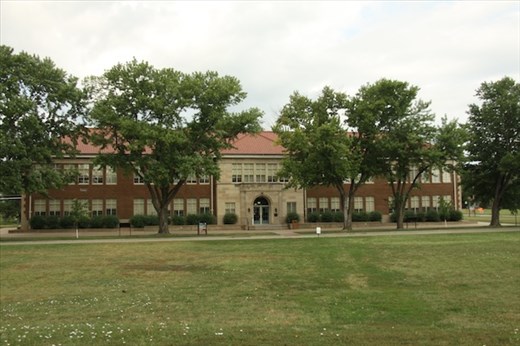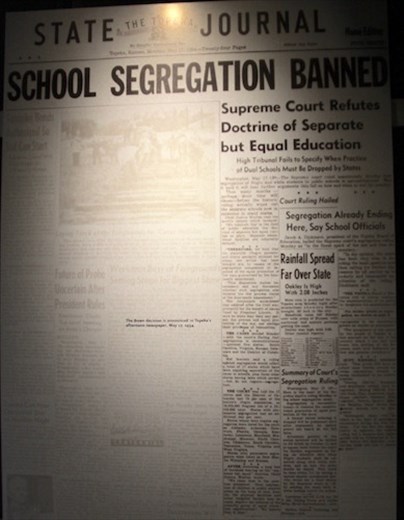HISTORY CAN HAPPEN ANYPLACE, and involve the most unlikely heroes. Monroe Elementary School in Topeka, Kansas, for example, wasn’t anyplace special. It looks and smells like any other school. But it was reserved for black students who were refused enrollment in “white” schools that were nearer their homes.

Monroe Elementary — Brown v. Board of Education NHS
Oliver Brown, the named plaintiff in the case, was a pretty typical parent, a local pastor and a welder for the Santa Fe Railroad. He and 12 other African American plaintiffs — Darlene Brown, Lena Carper, Sadie Emmanuel, Marguerite Emerson, Shirley FleminG, Zelma Henderson, Shirley Hodison, Maude Lawton, Alma Lewis, Iona Richardson, and Lucinda Todd — were recruited by the well-organized Topeka NAACP and represented by Thurgood Marshall, who — no one would have believed it then — would himself be appointed to the Supreme Court in 1967.

The End of the Beginning
The Supreme Court ruled unanimously that state laws that established separate schools for whites and blacks was unconstitutional. But as Winston Churchill once said, this wasn’t the end. It wasn’t even the beginning of the end. But the court’s landmark decision was the end of the beginning of racial discrimination in the US.
HISTORY IN THE MAKING: The US Supreme Court is facing a critical moment today. The makeup of the Court is fundamental to our freedom. I wonder if the Trump's court of the future would make as courageous and wise decision.